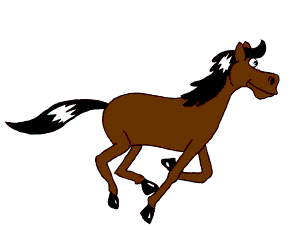Hello. First of all let's see the demonstration video:
----------------------------------------------------------------------------------------------------------
if that was too long check this one:
if that was too long check this one:
And here are the principles:
2. Anticipation
3. Staging4. Straight ahead and Pose to pose animation
5. Follow through and overlapping action
10. Exaggeration
11. Solid drawing
12. Appeal
5. Follow through and overlapping action
This principle could applied to something or an object that has extra parts (like hands, clothes, cars, hair and etc). For Example if the main object want to move, the extra parts also need to be moved in order to make/support the main part or the whole object moves realistically. Or like this:

6. Slow-Out and Slow-In
This principle is about a smooth movement. What I meant is, the movement of the object is not too stiff. For example a pendulum. So if we animate a swinging/moving pendulum, for the first frame. We might move the circle to the corner left for Out. And for the second frame or whatever it will be, we might move it to the corner right for Out and then to the center for In and so on. We might move it directly without techniques so the result will look stiff. But if we do the other way like trying to use the techniques which is to pull the circle out or in a bit after we framed it. And for that, we might get a better result. For demonstration click this link and then hold Ctrl + F and type Ease, and then click the images.
7. Arcs
Arcs means something that is moving with maintaining the direction. For example, a soccer player is going to kick a ball. So the Arcs will be the legs. Or a person is shaking a hand and footsteps like this in this image :

8. Secondary Action
Secondary Action also could be called an extra action, or it could be an action that is not really necessary for the main action but it gives more support to the main action. For the example, person A is talking with person B while they are playing video games. Or it could be like this:
6. Slow-Out and Slow-In
7. Arcs
8. Secondary Action
9. Timing10. Exaggeration
11. Solid drawing
12. Appeal
For this case (because this is a group assignment) I am going to do #5, 6, 7, and 8. If you want to see the rest go to this blog for #1 - 4 and and this blog for #9 - 12. Anyway let's start with the #5.
5. Follow through and overlapping action
This principle could applied to something or an object that has extra parts (like hands, clothes, cars, hair and etc). For Example if the main object want to move, the extra parts also need to be moved in order to make/support the main part or the whole object moves realistically. Or like this:

6. Slow-Out and Slow-In
This principle is about a smooth movement. What I meant is, the movement of the object is not too stiff. For example a pendulum. So if we animate a swinging/moving pendulum, for the first frame. We might move the circle to the corner left for Out. And for the second frame or whatever it will be, we might move it to the corner right for Out and then to the center for In and so on. We might move it directly without techniques so the result will look stiff. But if we do the other way like trying to use the techniques which is to pull the circle out or in a bit after we framed it. And for that, we might get a better result. For demonstration click this link and then hold Ctrl + F and type Ease, and then click the images.
7. Arcs
Arcs means something that is moving with maintaining the direction. For example, a soccer player is going to kick a ball. So the Arcs will be the legs. Or a person is shaking a hand and footsteps like this in this image :

8. Secondary Action
Secondary Action also could be called an extra action, or it could be an action that is not really necessary for the main action but it gives more support to the main action. For the example, person A is talking with person B while they are playing video games. Or it could be like this:
.jpg)
